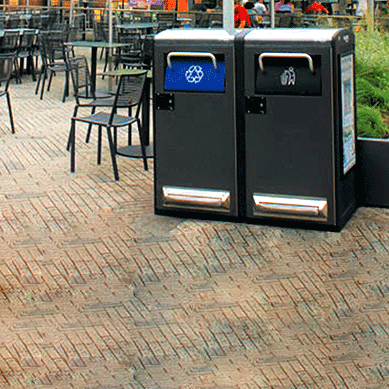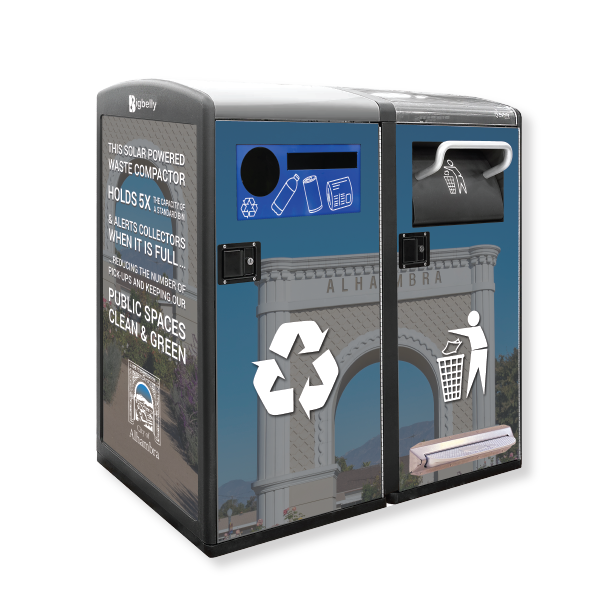Overflowing bins, infrequent and inefficient emptying of bins, weather-related bin damage, and features that are not user-friendly are just some of the issues that plague public waste bins in India. To counter these issues, Masstrans has brought to India Bigbelly (Smart Waste Management Solution) – a sensor-fitted Smart Bin with a compaction option that is connected to a central dashboard that generates alerts when the bin needs to be emptied.
Over 48,000 units of Bigbelly have deployed in over 50 countries around the world.

Smart waste management product features:
The life of the sensor is expected to exceed the useful life of the Bigbelly bin, which can be 10 years or more before they are upgraded to the latest model.
The type of waste determines the compression possible, but generally, one can put in up to 5-8 times more waste than a traditional bin. In the compactor bin, which has an uncompacted capacity of 120 liters, one can effectively hold about 600-800 liters in that bin after compaction.
Bespoke software The soul of the Bigbelly Smart Waste Management Collection System is the CLEAN software. The web-based software enables system set-up, management, monitoring, and optimization. Throughout the day, the bin is communicating snippets of information such as the status of the bin, the fullness levels, the alerts and alarms, etc to the centralized dashboard, which shows real-time collection requirements and metrics. For example, efficiency is how often one collects waste from the bin when it is ready for collection, and not when it’s half-full or empty. The goal of the system is to collect the waste only when it actually needs to be collected. The CLEAN software enables autogenerated notifications that trigger collections exactly when needed. The company can generate a suite of reports that enable users to prioritize collections and optimise ongoing operations. The CLEAN software is also accessible on mobile devices as an app.
Rugged design
The smart waste management Bigbelly Bins has galvanized sheet metal steel interior and exterior construction. The side panels and top are made of heavy-duty plastic for dent and scratch resistance. The bottom of the smart bin can be attached to a concrete block for safety purposes. The High Capacity Smart Bin
can withstand up to 20” (508 mm) of water without harming the electronics, and up to 36” (915 mm) of water with only minor damage to electronics.
The Standard Capacity Smart Bin is fully weatherized, but in the event of a flood, the components can withstand up to 40” (1.06 m) of water without harming the electronics. The electronic components can withstand a temperature range of -40ºC to +85ºC.
The product in practice
The smart waste management Bigbelly Smart Bin houses an inside bin that is used to store the waste, which can be easily accessed by opening the door with a key, which is provided to the authorized waste management staff. The newer models of Bigbelly also have the option of keyless access through the use of a smart card.
The inside bin could be a normal-sized bin or a lift bin with wheels that can be extended and fits into the normal hydraulic lift waste trucks for depositing the waste. The smart waste management Bigbelly bins are designed for total waste containment, including liquid waste. The compacting process follows the same principle of working irrespective of the type of waste being deposited into the bin.
Case study
Times Square, New York
There are 370 Bigbelly units in Times Square. One can see two or three stations together for waste segregation – one for landfill waste, one for bottles & cans, and one for compostable waste. They were able to effectively redeploy their collection resources for other activities around the city.
The other major problem New York City had was with rats, and through Bigbelly implementation they were able to get rid of this problem. They reduced collections from 28 times a week to 14 times a week. Their staff was spending 50% less time collecting litter.

